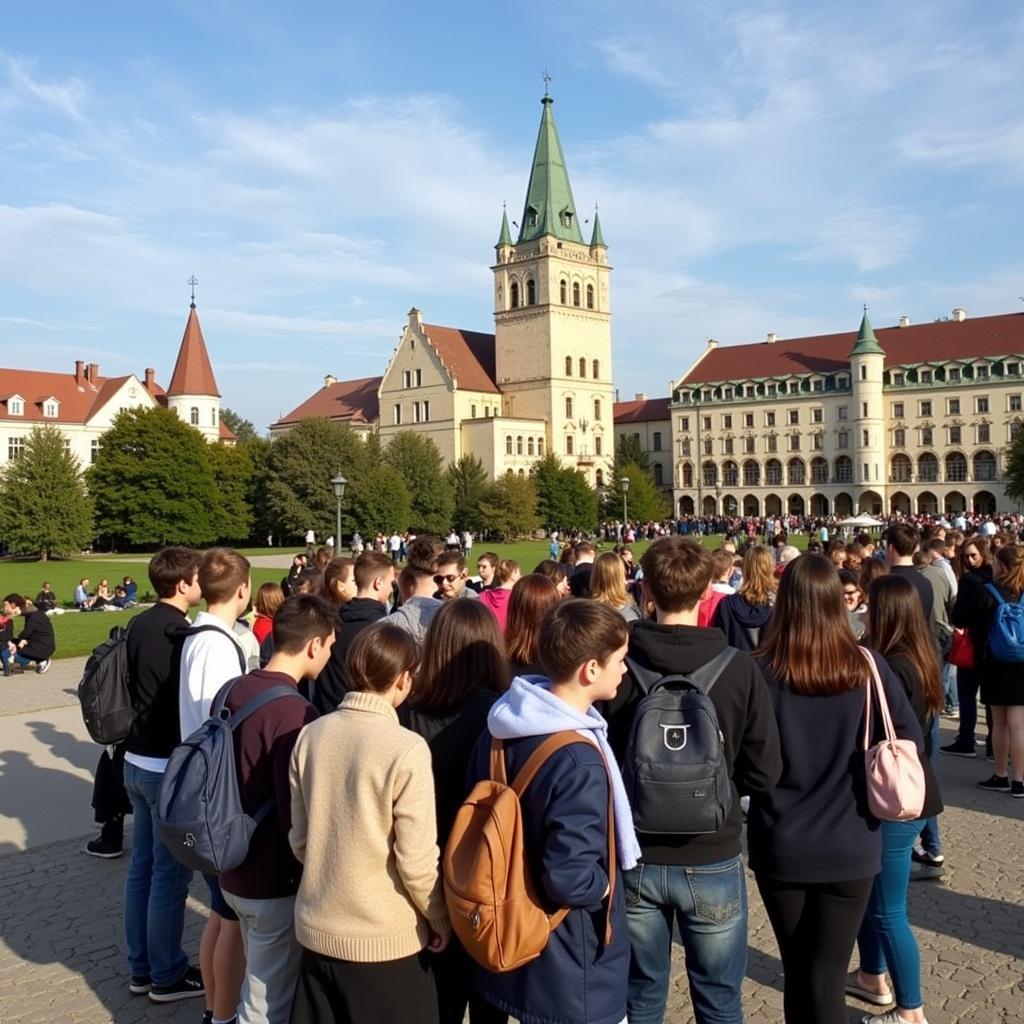ASEAN divisions are a complex topic encompassing various aspects of the association’s structure and operations. From economic cooperation to socio-cultural initiatives, understanding these divisions is key to grasping the multifaceted nature of ASEAN and its impact on Southeast Asia. This article will explore the different facets of ASEAN divisions, providing a comprehensive overview for anyone interested in learning more about this dynamic regional bloc.
Delving into the Different Types of ASEAN Divisions
ASEAN divisions can be broadly categorized into three main areas: economic, socio-cultural, and political-security cooperation. Each of these areas plays a crucial role in achieving ASEAN’s overall objectives.
Economic Cooperation: The Engine of Growth
Economic cooperation is a core pillar of ASEAN. The ASEAN Economic Community (AEC) aims to create a single market and production base, facilitating the free flow of goods, services, investment, skilled labor, and freer flow of capital. This integration drives regional economic growth, enhances competitiveness, and reduces poverty and socioeconomic disparities within ASEAN.
- ASEAN Free Trade Area (AFTA): AFTA eliminates tariffs and non-tariff barriers among member states, promoting intra-ASEAN trade.
- ASEAN Investment Area (AIA): AIA aims to create a more liberal and transparent investment environment, attracting foreign direct investment and boosting economic development.
- ASEAN Framework Agreement on Services (AFAS): AFAS liberalizes trade in services, allowing businesses to operate more freely across the region.
Socio-Cultural Cooperation: Fostering a Shared Identity
ASEAN recognizes the importance of socio-cultural cooperation in building a strong and cohesive community. This involves promoting cultural exchange, educational collaboration, and people-to-people connectivity.
- ASEAN Socio-Cultural Community (ASCC): ASCC aims to enhance regional identity and promote a sense of belonging among ASEAN citizens.
- Education Cooperation: ASEAN encourages educational exchanges, scholarships, and joint research programs to enhance human capital development.
- Cultural Exchange Programs: Various initiatives promote cultural understanding and appreciation among member states, fostering greater harmony and cooperation.
Political-Security Cooperation: Maintaining Regional Stability
ASEAN’s political-security cooperation aims to maintain peace and stability in the region. This includes mechanisms for conflict resolution, dialogue, and cooperation on non-traditional security challenges.
- ASEAN Political-Security Community (APSC): APSC aims to promote a rules-based regional security architecture based on dialogue and cooperation.
- Conflict Resolution Mechanisms: ASEAN has established mechanisms for peaceful dispute settlement and conflict prevention.
- Cooperation on Non-Traditional Security Challenges: ASEAN collaborates on issues such as transnational crime, terrorism, and disaster management.
What are the key focus areas of ASEAN’s sectoral bodies?
ASEAN’s sectoral bodies address specific areas of cooperation, such as agriculture, energy, tourism, and transport. These bodies develop strategies and implement programs to enhance cooperation and integration within their respective sectors. Understanding these sectoral bodies provides a more nuanced understanding of ASEAN’s operations.
Dr. Maria Santos, a prominent Southeast Asian economist, notes: “Understanding the interplay between the different ASEAN divisions is essential for comprehending the region’s complex economic and political landscape. These divisions represent not only areas of cooperation, but also the diverse challenges and opportunities facing ASEAN.”
Conclusion: The Future of ASEAN Divisions
ASEAN divisions are constantly evolving to meet the changing needs of the region. As ASEAN continues to integrate and expand its scope of cooperation, understanding these divisions becomes increasingly important. By fostering cooperation across these different areas, ASEAN strives to create a more prosperous, peaceful, and interconnected Southeast Asia. 2018 asee conference proceedings provide further insights into the evolving landscape of ASEAN divisions.
FAQ
- What is the ASEAN Economic Community (AEC)?
- How does ASEAN promote socio-cultural cooperation?
- What are the main objectives of the ASEAN Political-Security Community (APSC)?
- How do ASEAN’s sectoral bodies contribute to regional integration?
- What are some of the challenges facing ASEAN in achieving its goals?
- What is the role of ASEAN in promoting regional peace and stability?
- How does ASEAN engage with its dialogue partners?
For further information or support regarding Asean Media and divisions, please contact us at Phone: 0369020373, Email: [email protected], or visit our office at Thôn Ngọc Liễn, Hiệp Hòa, Bắc Giang, Việt Nam. Our customer service team is available 24/7.

